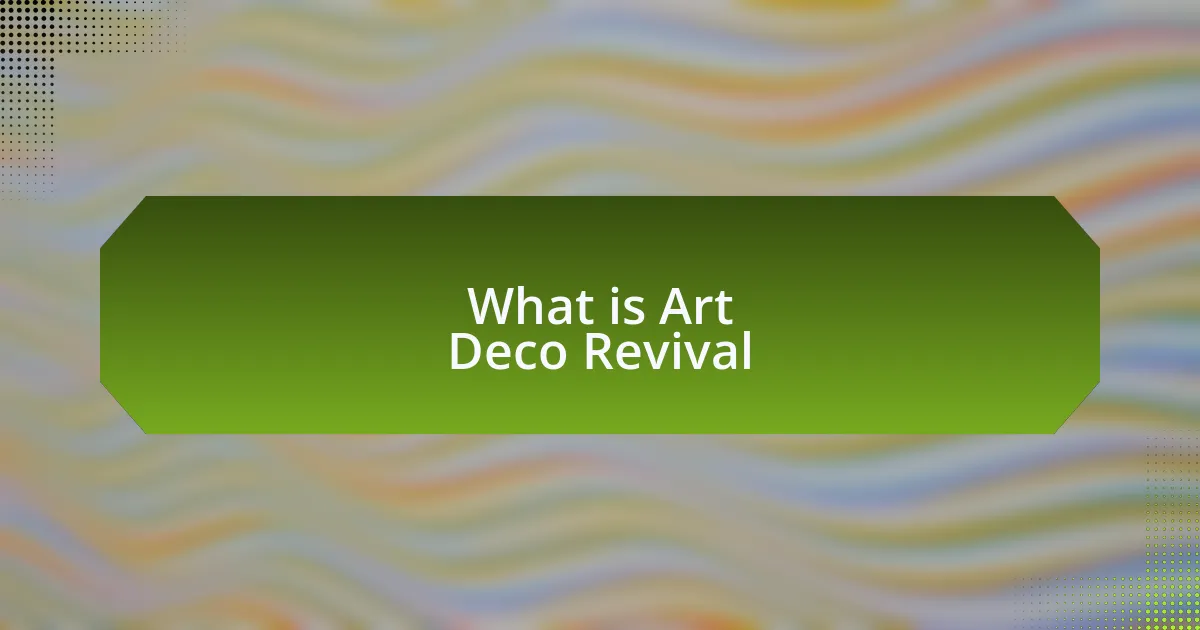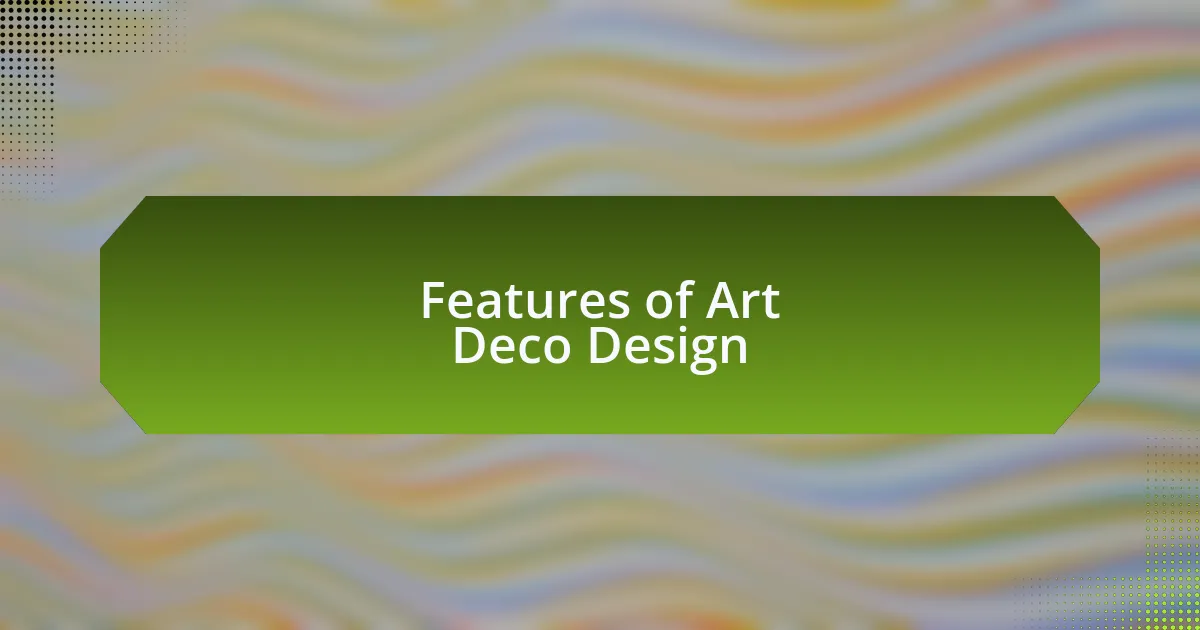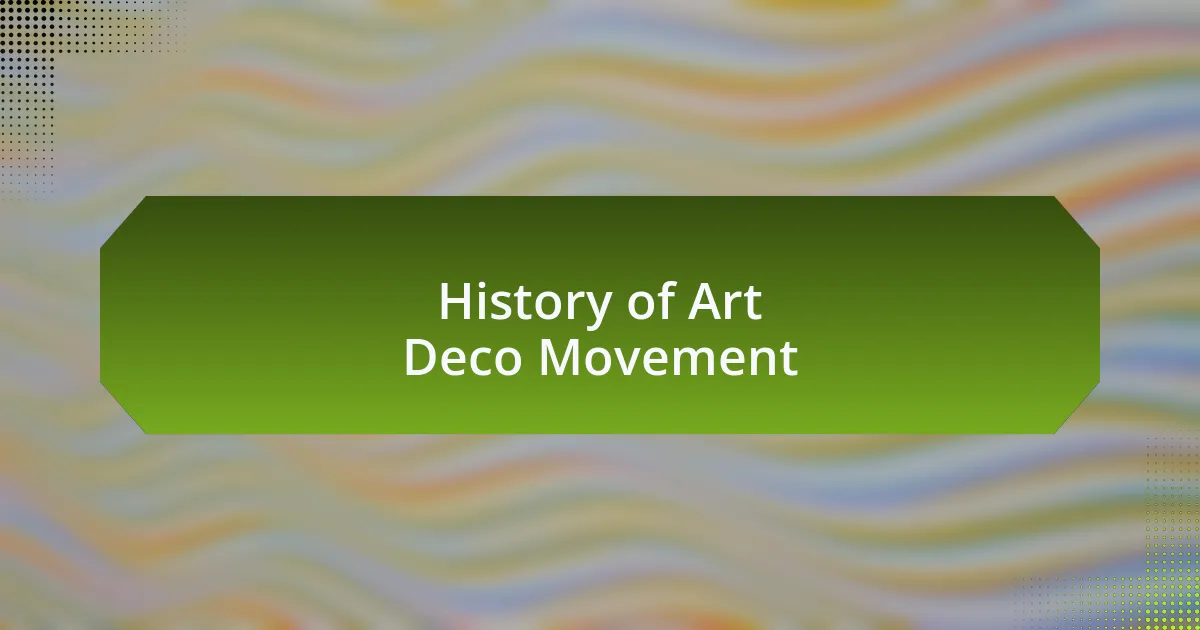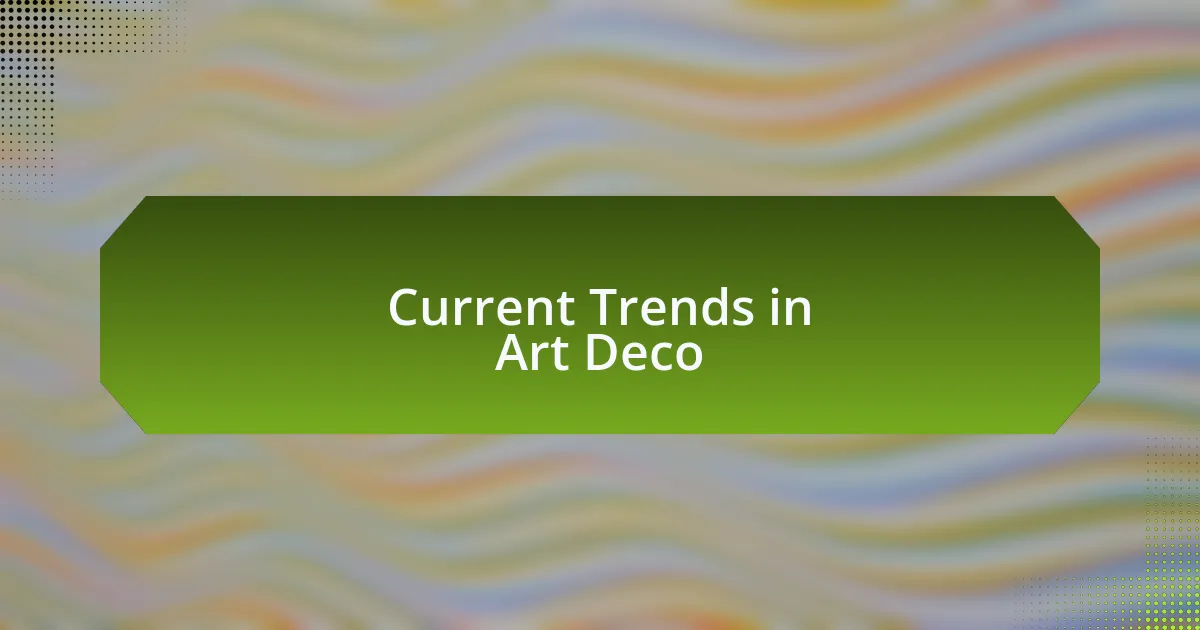Key takeaways:
- Art Deco Revival combines nostalgia and innovation, blending historical design elements with contemporary craftsmanship.
- The movement is characterized by bold geometric shapes, lavish materials, and vibrant color palettes, evoking elegance and luxury.
- Art Deco emerged in the early 20th century as a reaction against ornate styles, peaking in the 1920s and 1930s before declining in the 1940s due to World War II.
- Current trends feature sustainable practices and digital art, reimagining Art Deco aesthetics in modern contexts while maintaining its opulence.

What is Art Deco Revival
Art Deco Revival refers to the resurgence of the Art Deco style, a luxurious and visually stimulating design aesthetic that originated in the 1920s and 1930s. I remember walking through a beautifully restored Art Deco building—its sleek lines, bold colors, and intricate patterns made me feel like I had stepped back in time. The Revival brings back the glamour and sophistication of that era, highlighting its connection to modern materials and contemporary craftsmanship.
At its core, the Art Deco Revival marries the old with the new, creating a unique blend of nostalgia and innovation. Have you ever wondered how past styles can reshape modern design? I believe this revival allows architects and designers to draw inspiration from the past while pushing boundaries and experimenting with fresh ideas. It’s as if each piece tells a story, echoing the vibrancy of its predecessors but infused with a current sensibility.
This movement resonates with many because it evokes emotions tied to elegance and grandeur. I find myself captivated by the meticulous detail in a revival piece, whether it’s a furniture design or an intricate mural. It’s not just about aesthetics; it’s about the experience these designs offer, allowing us to connect with history while appreciating the creativity of today’s artists.

Features of Art Deco Design
Art Deco design is characterized by its bold geometric shapes and streamlined forms, often reflecting the dynamism of modern life. When I first encountered a classic Art Deco building in Miami, the ziggurats and chevrons seemed to pulse with energy. It made me realize how these designs aren’t just static; they capture a sense of movement and progress that still resonates today.
Another striking feature is the lavish use of materials and textures. From polished metals to exotic woods and rich fabrics, the tactile quality of Art Deco pieces evokes a feeling of opulence. I recall tracing the smooth surface of a Deco-inspired coffee table, appreciating how such materials combine to create a feast for the senses. It’s this tangible luxury that draws many of us closer to the style.
Color also plays a crucial role in Art Deco design, often combining bold, contrasting palettes that bring a vibrant personality to spaces. During one visit to an Art Deco exhibition, I was captivated by a striking mural that used deep blues and golds, creating a dramatic interplay that transformed the atmosphere of the room. It made me think: how do colors influence our emotions? In Art Deco, they invite awe and inspiration, making spaces feel both lively and sophisticated.

History of Art Deco Movement
The Art Deco movement emerged in the early 20th century, gaining momentum after World War I and reaching its peak in the 1920s and 1930s. I remember learning about the 1925 Exposition Internationale des Arts Décoratifs et Industriels Modernes in Paris, which truly showcased the movement’s spirit. It was fascinating to discover how this event highlighted not just architecture but also fashion and everyday objects, all embodying the exuberance of the Jazz Age.
As I dove deeper into the history, I realized that Art Deco was a reaction against the ornate styles of the previous eras like Art Nouveau. This desire for clarity and efficiency in design resonated with me; it was as if the world was shedding its past to embrace a modern future. How liberating it must have felt then! The movement’s roots can be traced back to a blend of different influences, from cubism to futurism, creating a unique voice that spoke to a generation eager for change.
By the time the 1940s rolled around, World War II brought about a decline in Art Deco’s popularity, as practicality took precedence over decoration. Reflecting on this shift, I cannot help but think about how art often mirrors societal changes. It’s intriguing to consider how such a vibrant style could dim in the face of turmoil, yet its essence never truly vanished. Today, we see remnants of Art Deco in various forms, a testament to its enduring legacy in design history.

Current Trends in Art Deco
Current Trends in Art Deco
Today, Art Deco is witnessing a resurgence across various design mediums, with contemporary designers infusing classic styles with modern sensibilities. For example, when I recently visited a new urban café, I was struck by the intricate geometric patterns that adorned the walls, reminiscent of the original movement but executed in a fresh palette. It’s fascinating to see how materials like brass and marble are being reimagined in sleek, minimalist ways while still paying homage to that glamourous era.
One of the most exciting current trends is the blending of Art Deco elements with sustainable practices. I love how designers are prioritizing eco-friendly materials without sacrificing the opulence that defines Art Deco. This combination not only nods to the past but also speaks to our need for responsible consumption. Can you imagine owning a piece of furniture that retains the elegance of the 1920s while being crafted from reclaimed wood? It’s refreshing to see how these two worlds can harmoniously coexist.
Moreover, digital art is embracing the Art Deco aesthetic in innovative ways. I often find myself scrolling through social media platforms, captivated by graphic designers who incorporate Art Deco motifs into modern visuals. The sharp lines and bold colors feel invigorating in a digital format, breathing new life into a style I thought had peaked. It’s a reminder of how art continually evolves and adapts, ensuring that the spirit of Art Deco remains alive and relevant in our contemporary culture.